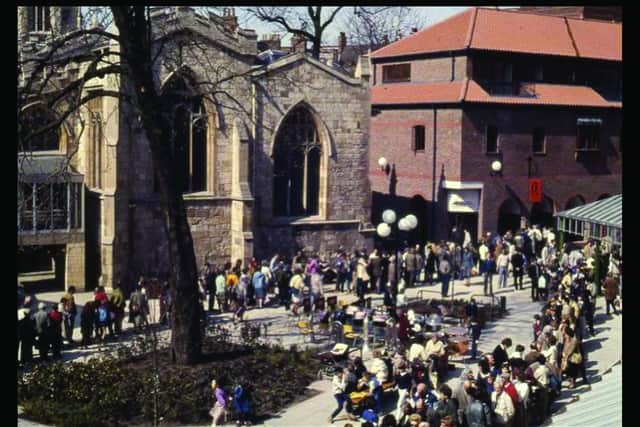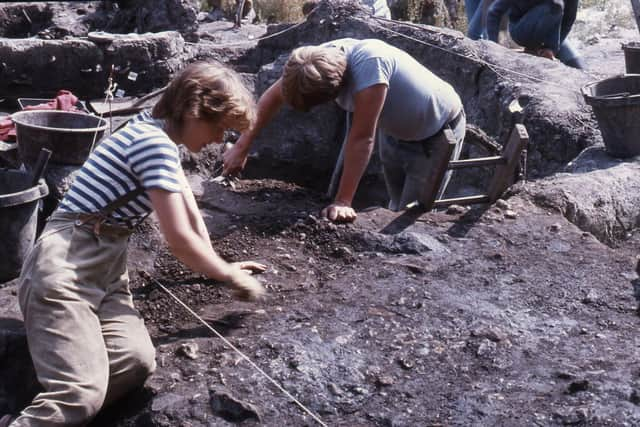How the Jorvik Viking Centre's opening 40 years ago changed York forever
With its imminent opening to the public due shortly, the team who had designed, developed and built this latest addition to York’s many historical assets, waited apprehensively to see if anyone would turn up.
The subsequent large queue of visitors that formed that day in York four decades ago would be the very first of well over 20 million to experience a radically innovative approach in museology.
Advertisement
Hide AdAdvertisement
Hide AdThe catalyst for this unique project, the Jorvik Viking Centre, would derive from the overwhelming interest of the public in the excavations of a 10th century site in the city’s Coppergate area carried out between 1976 and 81.


The internationally significant results of this dig, undertaken by York Archaeological Trust (YAT), would herald a profound new understanding of Viking-age York and Anglo-Scandinavian culture of this medieval period.
The designer of the original Jorvik, Wakefield-born John Sunderland, would attribute his inventive and decidedly maverick approach, to his early grammar school days.
Absconding from maths lessons in favour of exploring the town’s museum, art gallery and cinema, his habitual culturally based truancy would lead the 11-year-old Sunderland to surmise: “Why can't museums be more like films?”
Advertisement
Hide AdAdvertisement
Hide AdThis perceptive questioning of how museums traditionally presented their exhibits and the lack of accompanying coherent interpretation, would re-emerge decades later in the mind of Sunderland, the graphic designer.


“John Sunderland’s crazy ideas for making the York Archaeological Trust's proposed underground museum on the Jorvik excavation site into a film set stood out amongst a whole series of much more conventional proposals from architects and developers,” former York Archaeological Trust director Dr Peter Addyman recalled, “and what amazing results it has achieved since it opened 40 years ago.”
Sunderland’s vision, an atmospheric frozen-in-time Norse underworld, would capture the public imagination in its key objective of making archaeology (and history), accessible and intelligible.
Sunderland who had begun his career in television production (he created Dusty Bin for Yorkshire Television’s 3-2-1), made the switch to three dimensional design after being commissioned by YAT.
Advertisement
Hide AdAdvertisement
Hide AdJorvik, including the acrid stench of Viking cesspits, would prove to be a revolutionary and influential concept in museum exhibition design and archaeological interpretation worldwide.
Former city archaeologist for York John Oxley said: “Jorvik changed everything about how we tell stories about the past. Presenting heritage would never be the same again.”
Four decades hence, although updated technologically and significantly altered, the integrity of Sunderland’s core design idea however remains substantially intact.